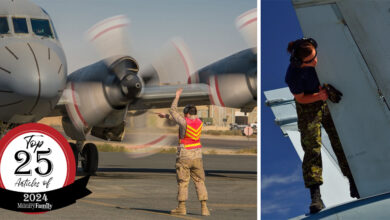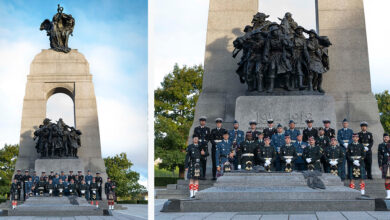Duty CallsUncategorized
HMCS Brandon and Whitehorse returned home from Operation CARIBBE 2015
As part of Operation CARIBBE 2015, HMCS Brandon and Whitehorse returned home, after nearly seven weeks at sea, having assisted the U.S. Coast Guard in the seizure and disruption of approximately 9,800 kg of cocaine.
The ships left from CFB Esquimalt on Oct. 23 to patrol the waters of the Eastern Pacific Ocean off the coast of Central and South America with a crew of 38. Seizure cases involved intercepting suspected smuggling vessels and locating bales of contraband at sea.
“I am tremendously proud of the dedication and hard work displayed by everyone involved in this operation. This demonstrates the strength in teamwork and working as a cohesive unit to suppress criminal activity in the region,” said Lieutenant-Commander Shane Denneny, Commanding Officer, HMCS Whitehorse.
The ships made a total of seven disruptions that resulted in nine 800 kg of cocaine being seized or intercepted. In conjunction with a U.S. Coast Guard Law Enforcement Detachment, HMCS Brandon and Whitehorse worked on four of the seven cases.
Two additional disruptions were made by HMCS Brandon and one by HMCS Whitehorse.
“The collaborative effort between both ships and the United States Coast Guard ensures the continued success of these types of operations in the region. I could not be more proud of the professionalism, communication and skillset of all the members involved in these disruptions,” Lieutenant-Commander Landon Creasy, Commanding Officer, HMCS Brandon.
This year the CAF has deployed one Iroquois Class Destroyer, five ships, two Sea King Helicopters, four CP140 Aurora maritime patrol aircrafts and two Halifax Class frigates.
The CAF works with international partners, including the U.S. military and law enforcement, to secure the seas and stop the flow of illicit drugs.
Operation CARIBBE has been in effect since Nov. 2006 to counteract illicit trafficking operations. To-date the CAF has intercepted more than 1,900 kg of marijuana and 18,500 kg of cocaine in the Eastern Pacific and the Caribbean Sea.











